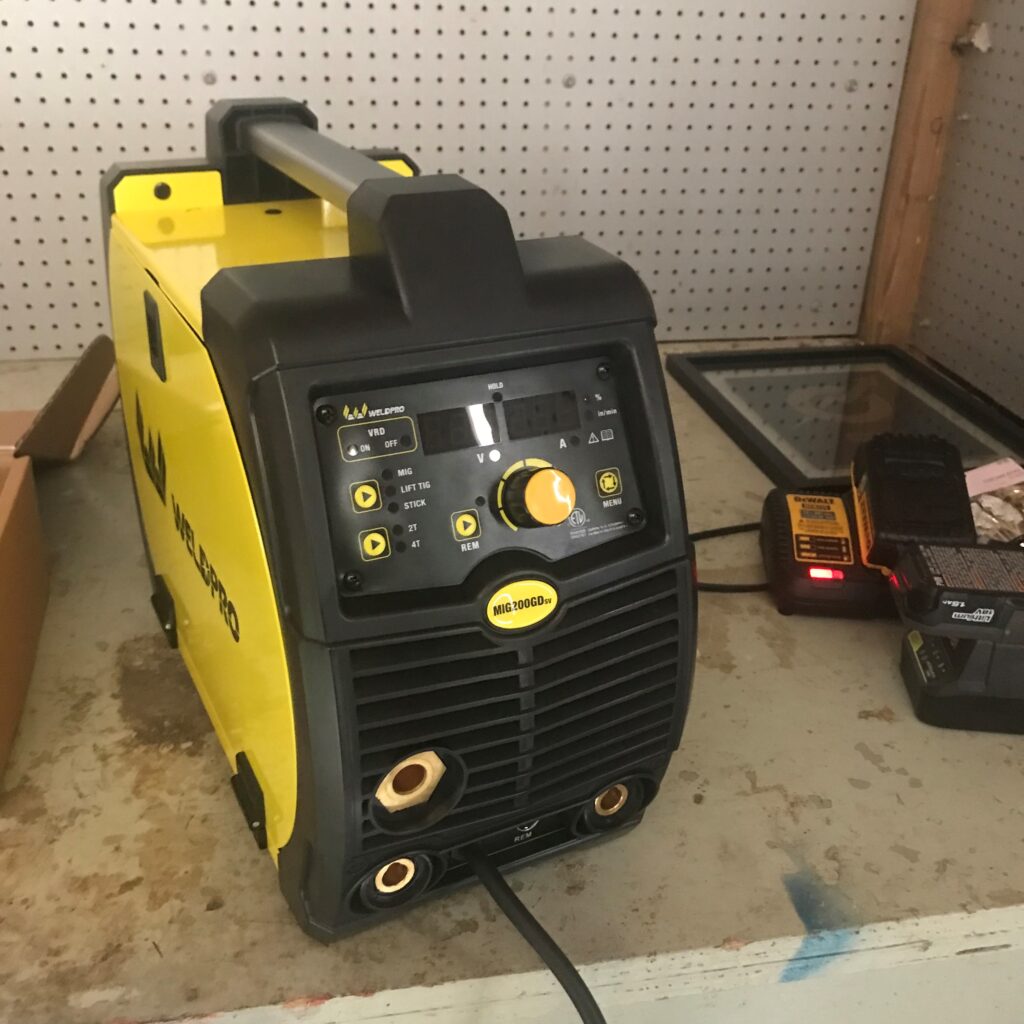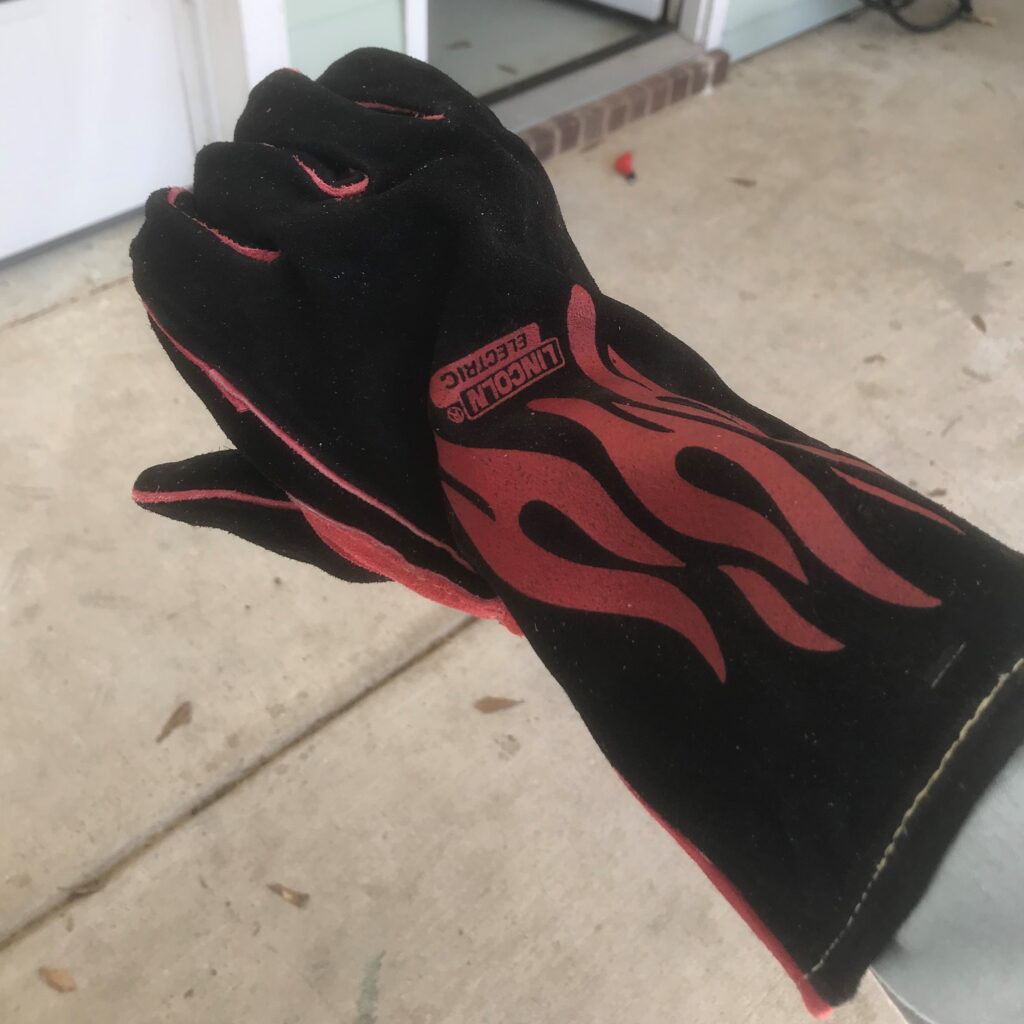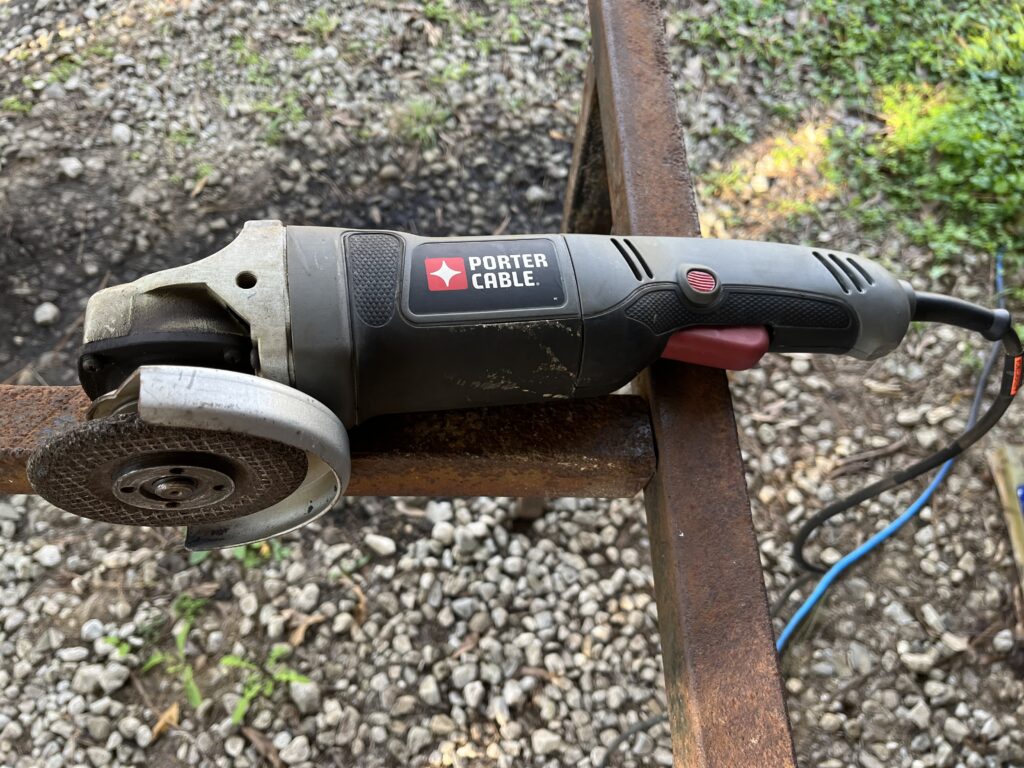You’ve decided to take the plunge and start welding. For many people, setting up their first welding project can seem daunting. But, start with the basics and make sure you have all the necessary equipment to make it happen.
Essential welding equipment you’ll need includes a welder, wire (welding stick), helmet, gloves, and welding helmet. In addition to these items, you should also have a wire brush, chipping hammer, grinder, clamp set with heavy-duty jaws, and safety glasses with side shields.
Welding is a hugely popular hobby and profession. It might seem intimidating for beginner welders, but with the right tools and a bit of practice, you can be on your way to becoming a pro in no time.
In this article, I go over what you need to get started in welding and provide some helpful tips. So, if you are interested in learning more about welding, keep reading.

Contents
Must-Have Welding Equipment
Common misconceptions beginner welders have is that learning welding is enormously expensive, but the fact is, there are only a few welding tools that you will use often. Sure, there are many other accessories and more advanced professional tools on the market, but you can get started bonding metal with just these starter items.
Welding Machine
You must have a welding machine (welder) to weld. Different types are used for various processes and kinds of metal. A good welder is robust, strong, and made to work with the kind of welding you intend to perform.
You can buy a multiprocess welder designed to perform more than one kind of welding, such as a TIG, MIG, Stick combo. I have this type of machine; it’s a WeldPro 200. It runs on either 110 or 220 and handles all the welding jobs I need it for.
Ideally, you should be able to do most of your jobs with your machine, which is why I recommend the WeldPro 200 for beginner welders. It gives you the option of running on a household electrical current but can be used on 220 circuits for bigger jobs.
It’s easy to set up and use and allows you to use three welding processes, stick, MIG, and TIG. I set my machine with flux core wire and used it without gas.
Another good starter welder is the 110-volt Forney Easy Weld 261, 140 FC-i Welder, 120V, Green. It’s a relatively inexpensive machine for beginners but doesn’t give you much room to grow. Over 2,000 customers reviewed this welder, and many rave about it.
I wrote an article about 110v welders for beginners that has the pros and cons of these smaller welding machines. I suggest you check it out before you choose your machine.

Helmet with Automatic Darkening
Auto-darkening welding helmets are a must-have for every welder, whether an experienced or amateur because they allow you to see the workpiece before and during your welds easily.
It’s been a long time since I used the old-style welding helmets, and I can’t imagine going back to them. The welding helmets with auto-darkening are well worth the price for a little extra expense.
They allow more precision and less frustration. An auto-dimming helmet will only lessen spark light effects on the safeguard shield when it senses a bright light.

Welding gloves.
When it comes to welding, safety is paramount. Don’t buy general work gloves; look for specialized welding gloves long enough to cover your lower arms and thick enough to protect against hot sparks.
Welding gloves are usually very thick, but you will still feel some heat released. You can also use them to scoop up hot metal for a few seconds when needed, but don’t get used to it because you will ruin them very quickly.
I have a few different style gloves for welding. I use my long Lincoln welding gloves stick welding, and because there is not too much splatter and sparks MIG welding, I wear short leather gloves.
Safety Glasses.
Safety Glasses.
When you grind, chip, or use your wire brush, sparks, and other small pieces of metal fly everywhere, so it’s essential to protect your eyes with proper safety glasses.
I recommend using ANSI Z87 certified safety glasses with side shields. The ones I use are easy to take on and off and are reasonably priced.
Wire Brushes
A welding process that creates slag requires a metal brush. If you weld with a stick welder or flux core arc welder, you need to scrape off the dross coating to reveal the final weld, and wire brushes are great for this.
You also need a wire brush to clean your metal if it’s dirty before welding. I use a wire brush attachment on my drill for both cleaning and slag removal.
Chipping Hammer
The hammer removes the slag from the weld, like the metal brush, hitting the joint with the tip to loosen it. It is used when the slag is stuck and needs a little more encouragement than that given by the brush.
Making a chipping hammer is one of the first projects you should try when learning to weld. All you need is an appropriately-sized piece of pipe and a chisel.


Welding Tools That are Good to Have on Hand
Grinder
You really need a handheld grinder to smooth out and clean up your welds. They are convenient to grind down rough spots before welding, and for many other purposes, they could easily be included in the must-haves. I prefer electric grinders because I use them so often and most battery-operated ones don’t last long enough.
Welding Tables
Welding on the ground is impractical, inconvenient, and can even put your safety at risk. Before you start a welding venture, you cannot overlook a solid surface to work with. It can be a traditional workbench or a table dedicated to welding.
I prefer to make my own table so it fits my height and needs. You can make your own table pretty easy with scrap metal and a piece of heavy sheet for the top. The most recent table I built was constructed from the frame of an old truck tool carrier.
Welding Jackets and Aprons
Welding jackets and aprons are essential safety equipment and protect a welder’s body from heat, sparks, and radiation generated by an electric arc when welding. It also protects against splatter while working with molten metals.
They should be comfortable to wear, made of heat-resistant leather, and very durable. I reviewed the best welding jackets, explained what to look for, and recommended my top picks.
Welding clamps
It’s essential to buy a good set of welding clamps before starting your project. They will ensure everything stays in place while you weld your pieces together.
Welding boots
Wearing leather boots will help to protect your feet when welding. I’ve welded in tennis shoes and wish that wasn’t the case because not only did my feet get scorched, but it also ruined my shoes.
Welding boots are not necessary for beginner welders or hobby welders, but you must have footwear that will protect your feet from sparks. Most leather work boots will suffice.
I’ve welded in tennis shoes on more than one occasion and wished I hadn’t. Not only did I burn my feet, but I also ruined my shoes. So, from experience, I learned the importance of wearing leather boots when working around welders.
Welding accessories
A few other convenient items to have on hand include a welding cart, a carry tote to keep all your hand tools in one place, magnets and clamps to hold metal objects in place while welding, and fiberglass welding blankets to prevent sparks from spreading.
MIG and cored wire in various diameters, welding tips, electrode sticks or tubes, flux, and TIG or gas welding rods are among the necessary tools you need. You can find beginner welding kits with some of these items sold as a package.
Basic welding information
Here’s a quick recap of the basic welding processes.
There are four basic types of soldering: MIG, TIG, Flux-core, and Stick. The welding process and techniques to be used usually depend on the application, the kinds of metal to be welded, and the skill and experience of the welder.
New welders learning to weld should start with inert metal welding (MIG), also known as metal gas arc welding (GMAW), which creates an electrical circuit that runs through the objects to be bonded together with a solder wire, which acts as an electrode.
Tungsten Inert Gas (TIG) welding requires more skill and takes longer than MIG welding but offers more precision. TIG, also known as tungsten gas arc welding (GTAW), can weld aluminum and alloys.
The third type of welding, called fluxed arc welding (FCAW), uses a continuously fed electrode tube in place of the wire used in MIG welding. The tube is metallic on the outside, with a flux agent in the core.
Also known as armored metal arc welding (SMAW), stick welding is a two-way method like TIG. Stick welding uses a flux-coated metal filler rod or stick.
FAQ
What is the Easiest Type of Welding Process for a Beginner to Learn?
The easiest welding process for a beginner to learn is MIG. MIG welding uses a continuous feed of wire as the electrode and a mixture of inert or semi-inert gas to protect the weld. It’s ideal for joining mild steel, stainless steel, and aluminum. It should be noted that MIG welding is not highly recommended outdoors because it requires a gas application.
